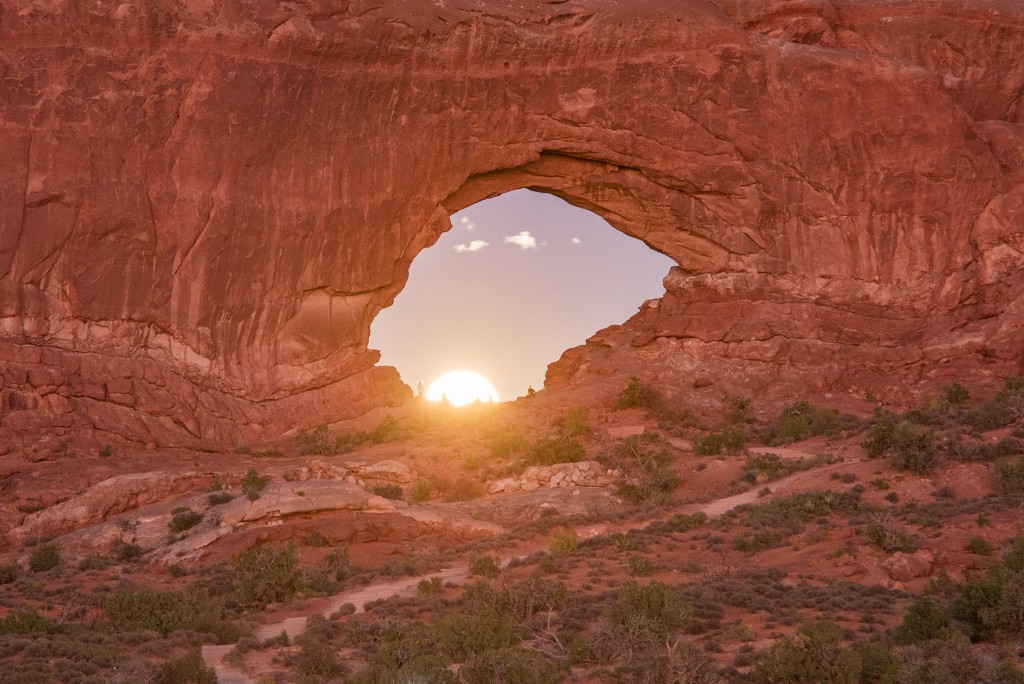Few spectacles are as impressive as the rising of the full Harvest moon. It’s just incredible!

This image shows the September, 2016 Harvest Moon rising through the North
Window in Arches National Park. If you look closely, you can even see other people enjoying the show from inside the window.
Lining up the rising or setting moon with the foreground subject of your choice is straightforward with a little planning. Here’s the basic approach:
1) Find the date of the full moon. The evening of the day before can be even better, as well as the morning of the day after. At these times, the moon is rising/setting during civil twilight, when its brightness more closely matches the foreground. This means it’s easier to capture the full moon in a single exposure. On the day of the full moon, you will often want to bracket your shot, in other words, make several intentionally under and over exposed images to blend subsequently in post-processing.
2) Determine the azimuth (compass direction) of the moon as it is rising or setting on the date you’ll be shooting.
3) Find a cool foreground subject, like the rock window seen here, to line up with the moon.
4) Use a planning app like PhotoPills, The Photographer’s Ephemeris or PlanIt! to decide where you should put yourself to line up the foreground subject with the moon. You will do this by using a compass to find a spot at the right azimuth – in this case, around 94° from true north.
Pro Tip 1: The further you are away from your foreground subject, the smaller it will be and the bigger the moon will appear relative to it.
Pro Tip 2: The moon rises at an angle, so you will want to get the azimuth of the moon when it is around say 5° above the horizon, depending on the height of your foreground subject. The planning apps make this easy.
5) Decide what focal length lens you want to use. Here, I used a 200 mm lens with a 1.7X teleconverter to really isolate the moon and its surroundings. The actual focal length used was 220 mm.
6) Figure out the aperture you need to get the depth of field so everything is in focus.
7) With a shutter speed no longer than say 1 – 2 seconds to keep the (moving) moon sharp, decide what ISO you should use. Here is a summary of the exposure settings for this shot:
1600 ISO | f/8 | 1.6 sec
8) If time permits, try an in-field day scouting recon mission to see how everything looks.
9) Finally, get out there at least an hour ahead of time to allow yourself plenty of time to set up. Use a cable release, mirror lockup, hang a bag from your tripod for stability, and get ready for some excitement once the moon starts to appear! Remember, the moon will totally clear the horizon in under 4 minutes so you’ve got to be prepared!
– BPSOP Instructor Mike Shaw
Mike Teaches:
















